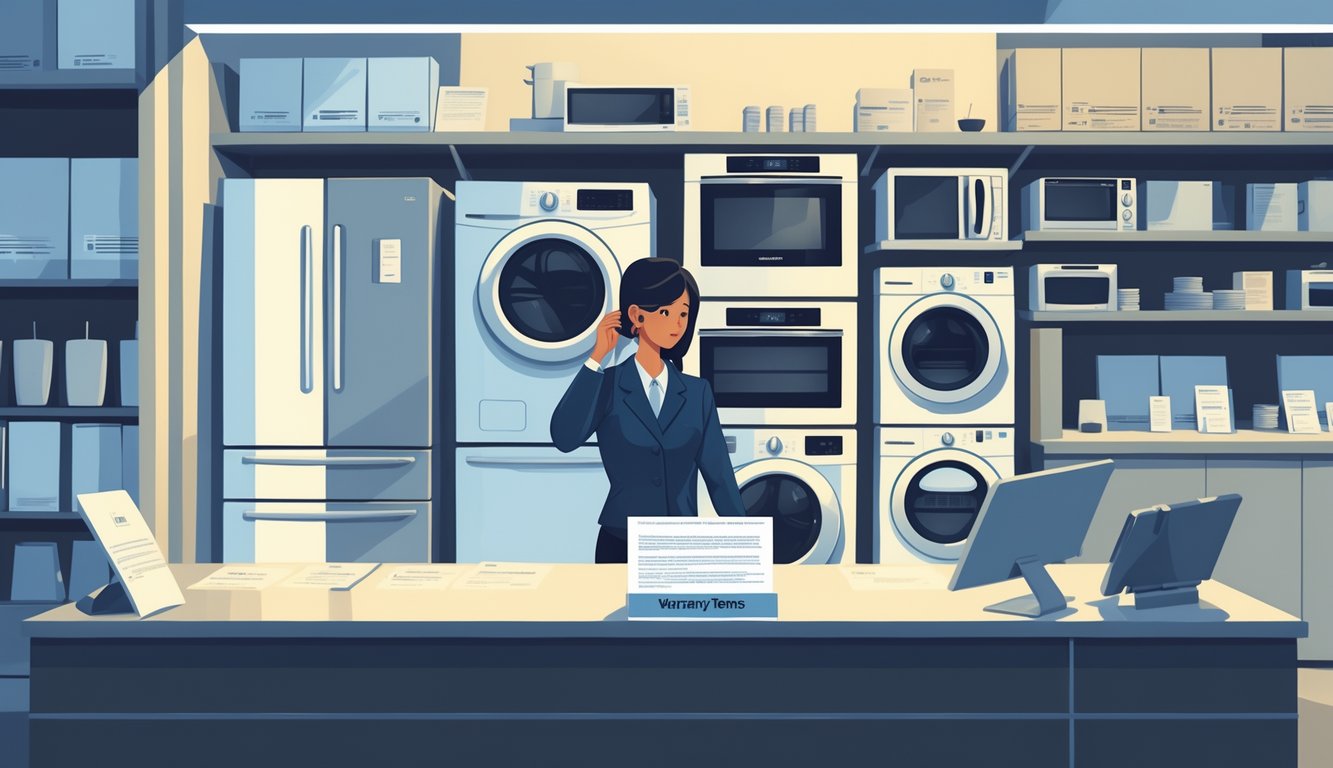
Extended Warranties and Service Contracts

Okay, so here’s the thing: I had this ancient washing machine, and the warranty drama was next-level. No one warns you that “protection” isn’t the same everywhere, and salespeople just sort of hand-wave the details. Why does my fridge need an “extended” warranty? And what does that even mean? I’m still not sure.
Differences Between Extended Warranties and Manufacturer’s Warranty
It’s not just splitting hairs—manufacturer’s warranty and extended warranty are two totally different beasts. Manufacturer (like Samsung or GE) gives you coverage for defects, parts, labor—usually a year, sometimes a bit longer. It’s automatic, you don’t pay extra, and honestly, it’s the best deal you’ll get. When that runs out, the retailer starts selling you the extended stuff: third-party contracts, extra exclusions, a bunch of small print. Nobody reads those, right?
I once called about a six-month-old dishwasher repair. Manufacturer’s warranty covered it, no problem. If I’d bought the store’s service contract? I’d have been stuck in “pending approval” limbo. The FTC even says you should wait until the manufacturer’s coverage ends before bothering with the extended junk. High-end brands (Sub-Zero, Wolf, whatever) actually give you better manufacturer coverage, but that doesn’t stop the hard sell. Don’t stack them—just wait. Don’t pay twice for the same half-hearted promise.
Common Pitfalls of Service Contracts
Nobody reads the contract. My neighbor thought her extended warranty covered everything. Nope. Her fridge broke, and “maintenance issues” weren’t included. FTC and ConsumerAffairs both say most service contracts skip accidental damage and the “normal wear and tear” that kills most dishwashers anyway. Exclusions everywhere—seals, wiring, cosmetic stuff. It’s like a loophole buffet.
You can sometimes buy a service contract months after purchase, but only if you ask and only before you try to claim anything. That’s never in the sales pitch. Some money gurus say just stash the cash you’d spend on a contract into a savings account, since most people never use their warranty enough to break even (and appliance repair costs are actually dropping, at least for mid-range stuff—2024 industry report, if you care). Retailers keep changing the rules, adding new fees, hiding deductibles. You only find out what’s actually covered when something breaks, and by then, surprise!—it’s not.
The Hidden Costs of Limited Coverage

Last summer, I thought my “full” warranty would make appliance disasters less painful. Nope. Hidden charges everywhere, popping up like whack-a-mole. “Limited warranty” is basically code for “read the fine print and prepare to pay anyway.” No one does, but then your wallet takes the hit.
Repair and Replacement Costs
Here’s the kicker: unless you shell out for some unicorn-level plan, you’re gonna hit a wall. Fridge compressor dies, repair guy shows up, and suddenly it’s, “That’s not covered, $300 please.” Liberty Home Guard says there’s a $2,000 per-appliance cap (Uptown Appliance Repair backs this up), but who ever actually gets that? Most claims get cut off way before the cap, and you pay the rest.
Most stores force you to use their “authorized” repair people. Go anywhere else, claim denied. Want original parts? Good luck. They’ll hand you generic knockoffs, and if you want the real deal, it costs more. Warranty terms change every year. I called three repair shops—got three different answers. Why do extended warranties cost more than just fixing stuff as it breaks? Consumer Reports (again) says if coverage barely beats the original warranty, you’re just tossing money in the trash.
Out-of-Pocket Expenses for Consumers
The extra costs pile up fast. Service call: $50 to $150, even if they just look at it and say “not included.” Some policies have $100 deductibles per visit. Sometimes there’s an “administrative fee” every year. Add in missing parts, overnight shipping, diagnostic charges, and the time you waste chasing all this down. Even “full” warranties let manufacturers wiggle out of stuff—implied warranties, transfer clauses, all that jazz (Consumer Reports, 2024).
It’s a snowball. One day the thing breaks, next thing you know you’re buried in paperwork, denied claims, receipts everywhere, and still paying. I asked for a washing machine repair estimate once—expected a normal fee, got a PDF full of exclusions, $486 in “adjustment” costs, and no way out. Try getting an unauthorized repair? They void your coverage. Oh, and if you switch repair providers halfway through, your deductible resets. Seriously, who came up with this?
Filing a Warranty Claim: Steps and Challenges
Every year, the paperwork gets worse. Filing a warranty claim? Should’ve just bought a toaster. There’s always new hoops, weird forms, cryptic instructions, and “policy changes without notice.” Half the battle is just proving you’re not making it up.
Navigating the Warranty Claim Process
People think it’s just a phone call or a web form. Ha. My fridge warranty wanted the original box—which, by the way, mice had turned into a condo. Retailers love to change their claim process right when you need it.
Manufacturer says “parts covered, labor not,” retailer says nothing, and the real answer’s buried in a PDF somewhere. My microwave died on day 361, but coverage ended at 360 for “internal failures.” “User error” had a different window. Makes no sense. Consumer Reports found 57% of people didn’t know accidental damage isn’t covered. So yeah, check the exclusions and definitions, and still, good luck—rules change all the time.
Proving Your Case: Documentation Required
They always want “proof of purchase.” One store took a rewards card screenshot, another wanted a weird embossed receipt. I’ve sent photos, videos, even a letter swearing I didn’t break it on purpose.
Serial numbers? Don’t lose the sticker. Product registration? Sometimes it matters, sometimes it doesn’t, sometimes they claim it’s “automatic” then say it’s “missing.” My neighbor ran a repair shop for 20 years and swears half the denied claims he saw were from missing paperwork, not real problems.
Last time I tried uploading blender photos, the system crashed and I had to start over with blurry pics. They still said, “Documentation unclear, please resubmit.” At that point, I’m convinced they just don’t want to fix anything.



